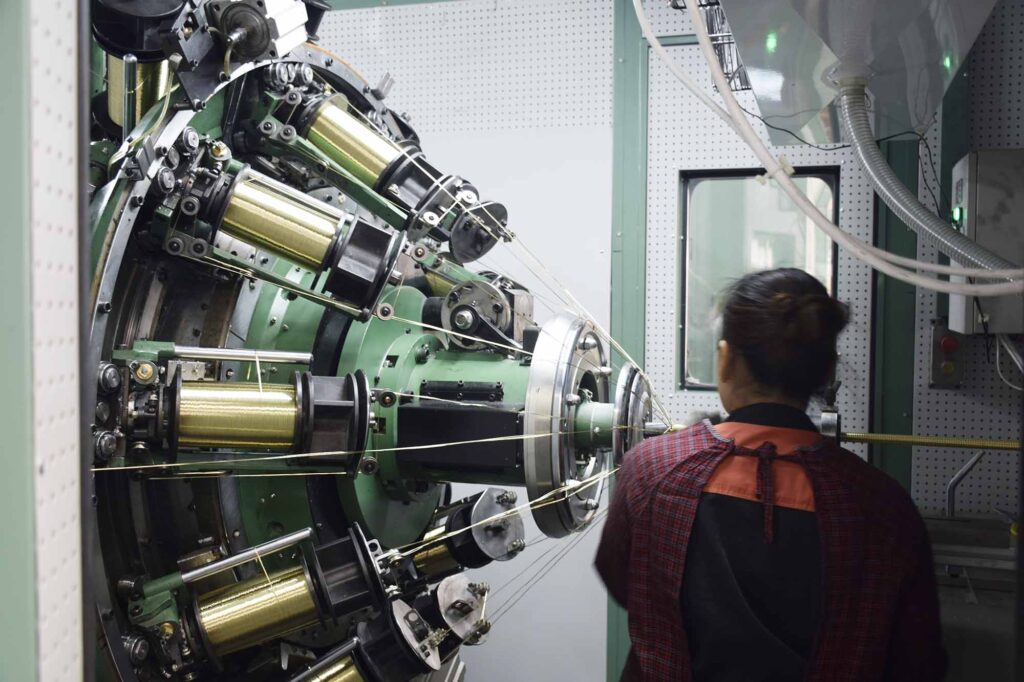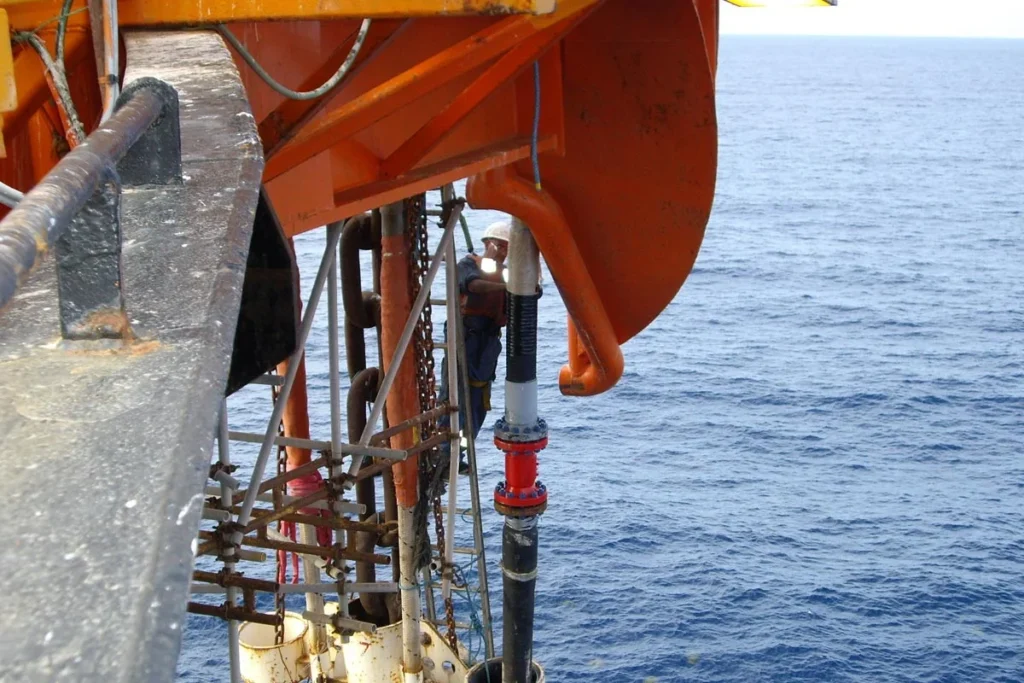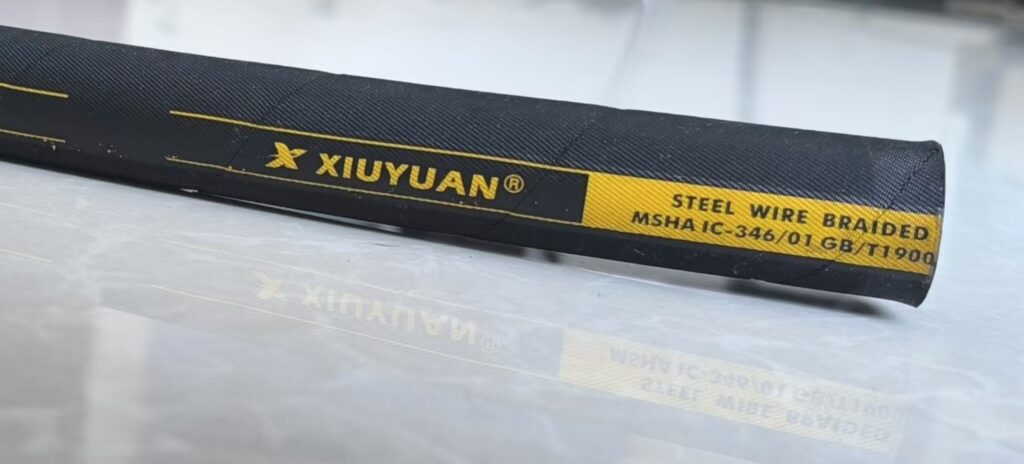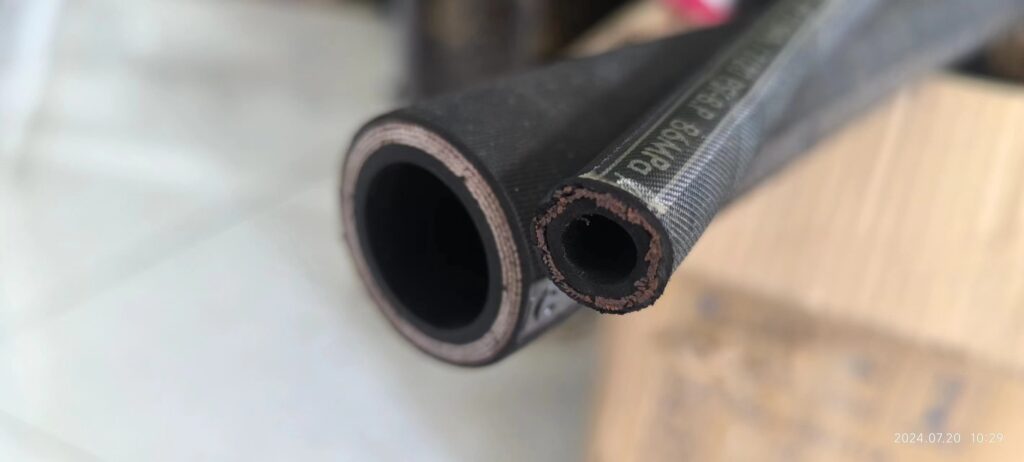Preparation before buckling
Select the hose that needs to be buckled into a hose assembly and the fitting that matches the hose and the terminal used.
It is necessary to confirm in advance:
- Hose type size and length of the required assembly (working pressure should not exceed the maximum working pressure that the hose can carry)
- Confirmation of the hose fitting (matching the hose and the terminal used) c. assembly angle of the hose assembly)
Key nodes here:
- Hose can not work in excess of the working pressure and mismatched working environment (media, temperature, etc.), otherwise it may produce a burst hose and other safety accidents.
- Improper length of the assembly will reduce the working life of the assembly and cause economic losses.
Consequences of improper selection and matching:
- Flying head
- Inability to bring the assembly to the normal operating pressure of the hose
- Reduces the working life of the assembly
- Assembly will not fit on the machine after buckling
Incorrect assembly angles may result in:
- The assembly can not be installed on the machine after buckling
- Does not allow the assembly to reach the normal operating pressure of the hose
- Reduce the working life of the assembly
Material
Cut the hose length (the hose cross section should be a smooth cross section perpendicular to the hose, do not cut diagonally and minimize burrs so as not to affect the use of the assembly) and prepare the joint.
Improper cross-section may result in:
- Flying head
- Inability to bring the assembly to the normal working pressure of the hose
- Reducing the working life of the assembly, etc.
The engraving of the joint logo, production must pay attention to the standard classification (processed, unprocessed and for which production tasks, and double-check the matching of the joint).
Strip the outer rubber
According to the size of the hose and the type of joint to determine the length and thickness of stripping, stripping length should be neat and appropriate amount, stripping thickness should be uniform and appropriate amount, do not hurt the reinforcement layer of the hose.
The consequences of stripping the amount of rubber (length and thickness) is not enough:
- Flying head
- Cannot make the assembly reach the normal working pressure of the hose
- Reduce the working life of the assembly, etc.
The consequences that will be caused by the excessive amount of stripped rubber (length, thickness), the loss of the outer rubber layer protection, the reinforcement layer near the joint may be oxidized in advance, etc., reducing the service life;
Stripping the enhancement layer may cause
- Flying head
- Inability to bring the assembly to the normal operating pressure of the hose
- Reduce the working life of the assembly, etc.
Cleaning of the inner tube
First clean the surface debris of both ends of the hose with an air gun, then clean the inner wall with a matching cleaning ball
Inadequate cleaning after stripping the rubber may cause:
- Flying head
- Inability to make the assembly reach the normal working pressure of the hose
- Reduce the working life of the assembly, etc.
The inner wall is not cleaned may cause
- Injury to the hose
- Contamination of the medium, etc.
Fit the spring guard and sheath (if needed) and assemble the joint
- Check the angle of assembly, and assemble the joint in accordance with in place, so as not to leave problems for the later process.
- Confirm whether the order requires external equipment such as sheathing, so that the sheathing cannot be installed after buckling.
Set up the buckling machine in advance
Choose the right mold and set the buckling volume. When buckling hose joints: if the buckling size is too much, the rubber layer inside the hose will be broken, causing oil leakage; if the buckling size is too little, it will cause oil leakage and the joint will be flushed out by oil pressure.
Buckling of hoses
When buckling, place the joint in the center of the mold as much as possible and do not press on the hexagonal nut. Prevent tools and other foreign objects from entering the head of the buckling machine. Place the hose with the coupling in the proper position in the head of the press, so that the entire length is pressed at once. Press the buckling button to perform the buckling operation until the buckling head stops buckling and automatically opens the mold. Take out the buckled hose assembly, use vernier calipers to check the outer diameter size of the buckled joint jacket, if it does not match with the parameter table, fine tune the buckling amount until the next hose buckling meets the requirements. Re-confirm the buckling angle problem.
Pressure Test
The first assembly needs to pass the pressure test after the buckling is completed before starting batch buckling.
Problems are found and adjusted in time to avoid batch substandard products. The general experimental pressure is twice the working pressure.
Packaging of hose assembly
Proper packaging to avoid scratching etc. of the product in transportation. Clear classification can improve subsequent work efficiency.





